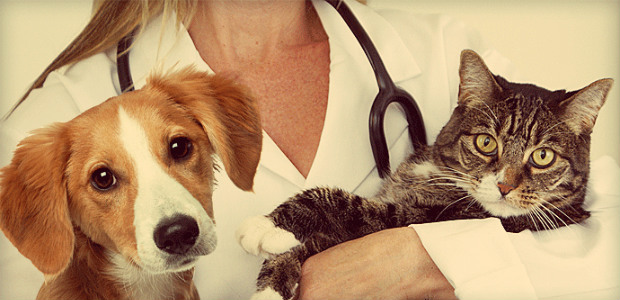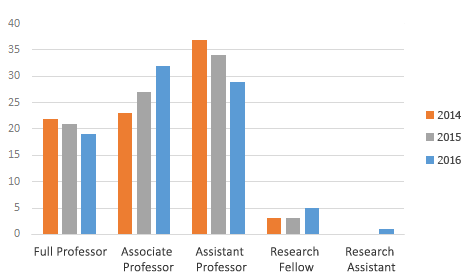Dipartimento di Medicina Veterinaria e Produzioni Animali
 The
Department of Veterinary Medicine and Animal Productions develops research
projects in the field of animal sciences, in favor of health of animal populations
as well as human and environmental. The final goal of the research activity is
to contribute to the advances of national and international knwoledge, and
promote innovations in the healthcare system and also in the production process
of region. In the pursuing the goal, the Department guarantees each researcher
to carry out research, applying the European Chart of Researcher, and in
accordance with the research lines of each Disciplinary Scientific Sector
(DSS). Thus, the Department ensures the best conditions to have the highest
scientific production, and it is aware that all efforts and achievements are
gained via interrelation and collaboration among personnel.
The
Department of Veterinary Medicine and Animal Productions develops research
projects in the field of animal sciences, in favor of health of animal populations
as well as human and environmental. The final goal of the research activity is
to contribute to the advances of national and international knwoledge, and
promote innovations in the healthcare system and also in the production process
of region. In the pursuing the goal, the Department guarantees each researcher
to carry out research, applying the European Chart of Researcher, and in
accordance with the research lines of each Disciplinary Scientific Sector
(DSS). Thus, the Department ensures the best conditions to have the highest
scientific production, and it is aware that all efforts and achievements are
gained via interrelation and collaboration among personnel.
Based on the idea of integrating skills and encouraging scientists, the Department is part of the Regional Center for Veterinary Urban Hygiene (CRIUV), in collaboration with Istituto Zooprofilattico Sperimentale del Mezzogiorno di Portici and ASL NA 1, whose headquarter is the Veterinary Hospital for stray animals (ex psychiatric hospital of Frullone, Naples).
In the Department, the Educational University Veterinary Hospital (OVUD) and Veterinary Anatomy Museum are located. The Museum is involved in zooanthropogical researches conducted in collaboration with the Laboratory of Applied Researches and Soprintendenza Speciale for Archaeology from Pompei, Ercolano and Stabia. Furthermore, the Department contributes to the Regional Center for Parasitosis Monitoring (CREMOPAR).
The Department has gained high scores in the research quality, according to the last assessment VQR 2004-2010. Numerous and highly impacted papers on international journals represent the high quality research standard and the strenght of the Department, where different scientific interests are well integrated and are addressed to increase knowledge in all areas directly or indirectly linked to Veterinary Sciences, Animal Productions and Veterinary Biotechnologies. The multitude of scientific approaches represents an unicuum, a multidisciplinary approach, characterized by the integration and strenghtening of DSS of the Department.
Research output (2011-2013)

Data on the research output of the Department are extracted from the 2011-2013 Research activities Review (SUA-RD)
Staff

Data on the Department Staff is taken from the institutional website of the Italian Ministry of University and Research
Research areas
- Veterinary Anatomy
- Veterinary Physiology
- Pathology
- Food Hygiene
- Infectious Diseases
- Parasitology and Parasitic Diseaseas
- Veterinary Pharmacology and Toxicology
- Internal Medicine
- Veterinary Surgery
- Veterinary Reproduction
- Animal Genetics
- ANIMAL NUTRITION
- ANIMAL HUSBANDRY
- Poultry, fish and rabbit production
Research projects
Progetti SSD VET 04-AGR 17-AGR 18-AGR 19-AGR 20
- PODOLICA - Supporting the application for innovation ion food demand: enhancement of Calabrian Podolian beef. AGR/19. Funding Calabria Region. Sito web: http://www.podolicadicalabria.it/
- A.PRO.ZOO. - Innovative techniques for productive and reproductive performance improvement in buffalo. AGR/19. FundingCalabria Region. Sito web: http://www.sdsrl.it/index.php/progetti/agroalimentare/127-ribufa2
- R.A.R.E.Ca - Endangered autochthonous breeds of Campania region. AGR/17. Funding Campania Region. Sito web: www.rareca.it
- Eu ROPA Wild n. 2012-1. IT2ERA10-38862 - EUROPE RELATION BETWEEN OPERATORS PROFESSIONAL ADDICTED TO WILDLIFE CONSERVATION. AGR/19. Funding National Agengy LIFELONG LEARNING PROGRAMME ITALY
- ANGITOLA FISH2O - Control of fishing activities, increase of biodiversity and improvement of aquatic ecosystem in Angitola. AGR/19. Funding National Park of Serre
- S.I.C.U.RA. - Protection and valorization of typical derived animal products. AGR/19. Funding MIUR
- FORAGE - OPTIMIZATION OF WATER UTILIZATION IN FORAGE AGRICULTURAL MANAGEMENT. AGR/19. Funding Campania Region. Sito web: http://www.forage.eu/
- NICASTRESE - Project for safeguarding Nicastrese goat.. AGR/19. Funding Calabria Region
- PODOLICO - Project for safeguarding Calabrian Podolian cattle. AGR/19. Funding Calabria Region. Sito web: http://servizi.provincia.cs.it/provincia/Giunta2012.nsf/bf0a295f08fb8220c12574b9003da3e5/52b0ea0f2a0e399ec1257b0a0035e01f/$FILE/progetto.pdf
- Aquabiotech - Breeding Pagellus bogaraveo: assessment of technical, economic and environmental reliability. AGR/20. Funding Puglia Region
- PIFEMARU - INNOVATIVE PROCESSING AND MALE FERTILITY IN RUMINANTS. AGR/19. Funding Umbria Region . Sito web: http://www.parco3a.org/progetti/processi-innovativi-e-fertilita-maschile-nei-rumin
- BENENIR - VALIDATION OF rISK INDICATORS FOR ANIMAL WELFARE IN BUFFALO. AGR/19. Funding Campania Region. Sito web: http://www.aia.it/CMSContent/brochure.pdf
- GLICERLEG - Evaluation of cereals and legumes grains for diabete patients: swine as animal model. AGR/18. Funding Campania Region. Sito web: www.glicerleg.it
- MAREA - Advanced Materials for Research in AgriFood Sector. VET/04. Finanziamento Regione Campania (PON03PE_00106_1) . Sito web: http://www.mareanetwork.eu/ mareascarl@legalmail.it
- BOVLAC - Enhancement of bovine milk from Campania with an integrated system for the certification and traceability of the product named ' Fiordilatte di Napoli. VET/04. Finanziamento Regione Campania (PSR misura 124)
VET 05
- PRIN 2009 - Agenti infettivi e fattori alimentari nel determinismo dei tumori della vescica nel bovino. Finanziamento MIUR
- MIPAAF 2009 - Nuove emergenze in sicurezza alimentare: strategie per la riduzione del rischio e per la valorizzazione delle produzioni nazionali. Finanziamento Ministero delle Politiche Agricole e Forestali
- MIPAAF 2009 - l'Agrozootecnia biologica: considerazioni in termini di sicurezza alimentare e problemi di salute pubblica. Finanziamento Ministero delle Politiche Agricole e Forestali
- Alimenti d’origine animale e tumori: potenziale ruolo dello Streptococcus bovis nel determinismo del tumore del colon nell’uomo. Finanziamento Regione Campania
- Presenza di TT virus negli alimenti di origine animale. Potenziale pericolosità per la salute umana. Finanziamento Regione Basilicata
- Genotyping of Cryptococcus neoformans and C. gattii
VET 06
- CAPARA - Goat-parasite interactions: from knowledge to control”. Finanziamento COST. Sito web: http://www.capara.org
- GLOWORM - Innovative and sustainable strategies mitigate the impact of global change on helminthic infections in ruminants”.. Finanziamento FP7. Sito web: http://www.gloworm.eu/project
- EurNegVec - European Network for Neglected Vectors and Vector-Borne Infections. Finanziamento COST. Sito web: http://www.eurnegvec.org/
- PARACONTROL - PSR 124: Controllo delle parassitosi. Finanziamento Regione Campania. Sito web: http://www.cremopar.unina.it/
- EHINOCAMP1000 - Controllo e riduzione della echinococcosi/idatidosi nelle popolazioni animali e prevenzione della patologia umana correlata. Finanziamento Regione Campania. Sito web: http://www.cremopar.unina.it/
Libraries, labs and facilities
Common Laboratories
- Osteology didactic-scientific laboratory - In the Osteology didactic-scientific laboratory is possible to study the interspecific osteological characteristics of the domestic animals finalize to the forensic veterinary and archeozoology.
- Necropsy Room - The Necropsy Room is a didactic-scientific laboratory in which it is possible to perform the dissection of dead animals of all species both for diagnostic and research purpose. The necropsy room is widely used by students for practical work in professional disciplines such as pathology, inspection, avian pathology, clinical surgery and by local health authorities of the Campania Region for the investigation of environmental epidemiology and the Cancer Registry activities of the Campania Region. It is authorized following the rules of EU Regulation 1069/2009.
- Laboratory of Optical Microscopy - The laboratory of optical microscopy includes high performance equipment (Nikon Eclipse 90I, DMRA2 Leica, Zeiss Axioskop2 MOT Zeiss V8) for confocal, fluorescence and light microscopy. The laboratory coordinates their use in order to facilitate and enhance collaborative research across the Department.
- Electron microscopy Laboratory - The research is focused on the study and morphometric analysis of subcellular structures such as muscle fibers, viral particles, bacteria, collagen, subcellular organelles (RER, SER, Golgi, mitochondria, peroxisomes, melanosomes and other organelles)
- Fish Facility - Ricirculating sea water plant for research in the field of aquaculture.
Main Research Facilities
- Electron transmission microscope; Real Time thermocycler; ABI Prism 7000; LC/MS; HPLC;GC
References
- Department details
- Website: www.mvpa.unina.it